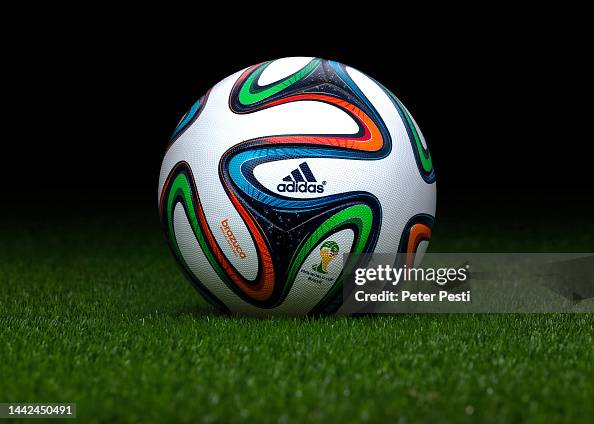You know me, I like to share the hard data, the real steps I take. I recently snagged what looked like a steal on a 2014 FIFA World Cup Brazuca ball online. The price was too good. That’s always where the trouble starts. I had a gut feeling it was a fake, but I bought it anyway because I needed to prove my suspicions. I already have a legit match ball, so I could put them side-by-side.

The moment the package arrived, I ripped the tape off. The ball looked decent, but when I picked it up, that first alarm bell rang instantly. It felt slightly sticky, almost tacky, which the official texture shouldn’t be. The real Brazuca has a fine, almost dimpled texture, not a sticky sheen. I immediately started the deep dive.
Step 1: Scrutinizing the Panel Construction
The 2014 ball was a big deal because of its revolutionary design: six identical propeller-shaped polyurethane panels, thermally bonded. No visible stitching. I had to examine the seams up close. I grabbed my reading glasses and pressed my fingers hard along the lines where the panels met.
- The Real Deal: The seams should feel absolutely smooth, perfectly fused. You shouldn’t be able to easily pry them apart even slightly.
- The Fake Check: On the suspicious ball, I felt a slight ridge. If you looked really hard, you could see tiny imperfections in the bonding process, almost like micro-bubbles of glue forcing their way out. I grabbed a kitchen knife (dull side, don’t worry) and gently scraped the black lines. There was a faint residue that shouldn’t have been there.
Step 2: Weight and Size Verification
You can tell a lot about the inner bladder and materials by the sheer physics of the ball. Counterfeiters save money by using cheaper, lighter materials inside. I needed quantifiable data, not just feelings. I rolled the ball onto my kitchen scale, the one I usually use for baking.
- Official FIFA Specification: Match balls should weigh between 420 grams and 445 grams.
- The Suspicious Ball: Mine clocked in at a skinny 408 grams. Instantly disqualified. That explains why it felt lighter in my hands and why, when I bounced it hard on the concrete, the rebound height felt marginally lower than the genuine ball sitting next to it.
Step 3: Examining the Stamping and Text Details
This is where I catch the majority of lazy fakes. The official printing stamps are extremely precise. I was looking for the “Brazuca” text, the Adidas logo, and the all-important “FIFA Quality Pro” stamp (or similar). I pulled out my high-resolution phone camera and zoomed way in on the text.
- Font Precision: The fake had letters that looked slightly smeared or faded, especially around the edges. The real ball’s lettering is always crisp, pressed deep into the material.
- Country of Origin: I checked the manufacturing stamp. My genuine ball said “Made in Pakistan.” The suspicious one also said “Made in Pakistan,” but the text placement was a tiny bit crooked, almost like the stamp plate shifted when it hit the panel.
Step 4: The Valve Check and The Smell Test
The valve location is a critical, often overlooked detail. On the Brazuca, the valve should be perfectly inserted, flush with the panel surface, and often positioned right on one of the geometric shapes. I checked the suspicious ball. The valve wasn’t flush. It was slightly recessed, and the plastic felt cheap and hard, not the flexible, durable feel of the official valve.

Then came the definitive, unscientific test: I smelled it. Yeah, I know. But listen, the materials used in high-end match balls—the thermal plastic polyurethane—have a distinct, almost pleasant chemical odor when new, or a neutral smell when aged. This ball smelled strongly of cheap, overpowering industrial rubber, like a cheap inner tube. That told me immediately they used low-grade rubber for the bladder.
Why Do I Go Through This Much Trouble?
You might be asking why I spend hours measuring fonts and weighing soccer balls. It goes back years. Back when the 2006 World Cup was on, I saved up for months to buy the official match ball, the Teamgeist. Paid a fortune for it. Two weeks later, I was kicking it around, and a seam split. I sent it back to the seller, who fought me tooth and nail, claiming it was real. I ended up calling Adidas directly and sending them high-res photos. They confirmed it was a very convincing, high-quality counterfeit from a factory in China that was using unauthorized materials.
That infuriated me. Spending premium money for garbage. Since then, I’ve spent time learning the specific manufacturing processes for every single World Cup ball released since the early 2000s. I know the panel count, the recommended inflation pressure, and the exact weight tolerance, all from studying manufacturer specs and collector forums. I even have a checklist laminated in my garage.
Because of that experience, I don’t trust anyone when it comes to collectibles. I need to handle it, weigh it, and analyze the printing myself. That 2014 ball I received? It failed the weight test, failed the smell test, and failed the detailed printing inspection. It was a high-grade replica, but it wasn’t the real deal. I boxed it up, filed the return, and got my money back. Don’t let those details slip past you, collectors. Check everything.
